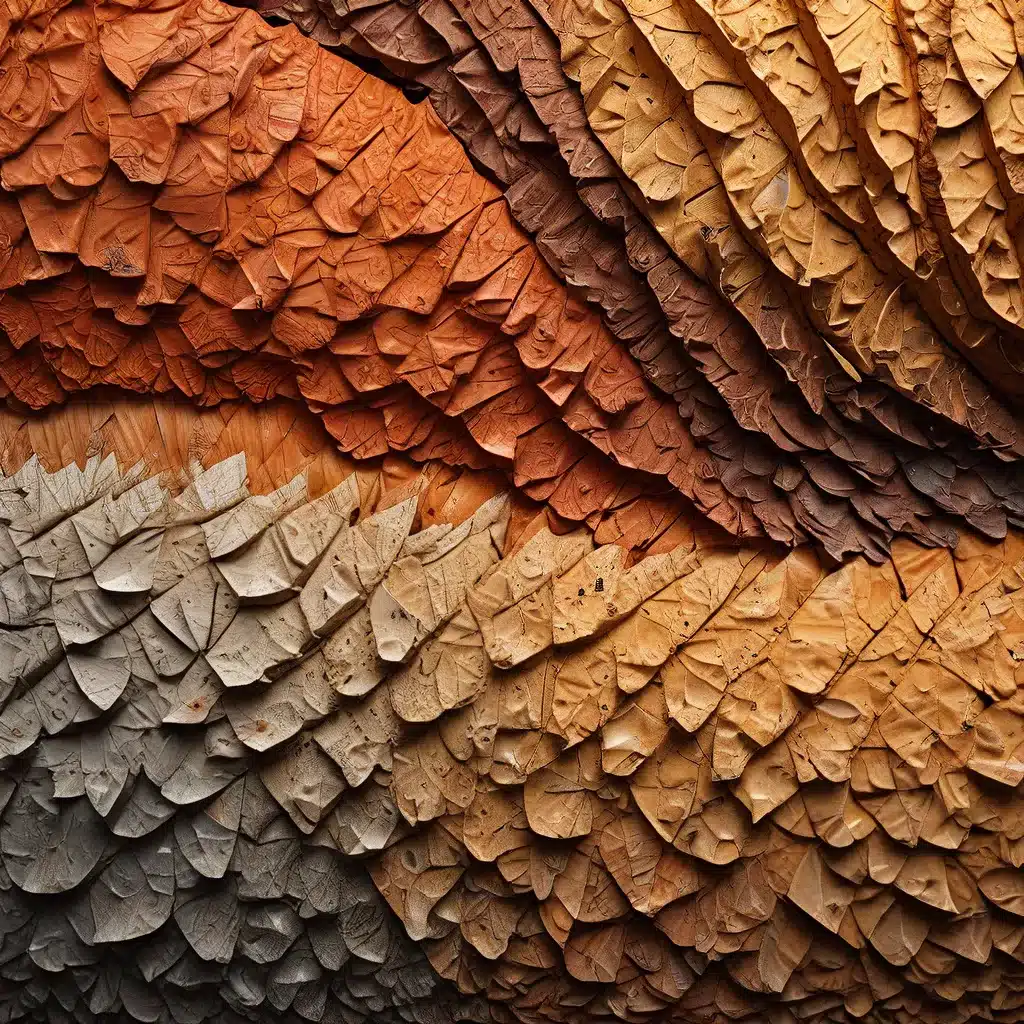
In the ever-evolving world of interior design, the interplay of textures and shapes has become a captivating realm of exploration. From the rustic charm of weathered wood to the sleek elegance of polished metal, the way materials and forms interact within a space can profoundly impact the overall aesthetic and emotional experience. In this article, we’ll delve into the concept of dimensional dynamism, uncovering how designers and homeowners can harness the power of diverse textures and striking shapes to create visually stunning and deeply immersive living environments.
Embracing Textural Diversity
Texture is a fundamental element of design that extends beyond the mere visual appeal. It has the remarkable ability to engage our senses, evoking tactile responses and stirring emotions. In the pursuit of dimensional dynamism, designers often juxtapose varied textures to create a mesmerizing interplay of light, shadow, and depth.
Consider the innovative approach of an artist who blends traditional painting techniques with sculptural elements. By using a unique combination of high-quality acrylic paint and medium, they are able to sculpt and mold the paint into three-dimensional forms, resulting in an impasto style that pushes the boundaries between two-dimensional and three-dimensional art. This fusion of texture and shape invites the viewer to experience the artwork in a tactile and immersive manner, sparking a deeper connection and appreciation.
Similarly, in the world of interior design, designers often incorporate a range of textures to create visually stimulating and multidimensional spaces. Rough-hewn wooden beams, plush velvet upholstery, sleek glass tabletops, and intricate woven rugs can all work in harmony to craft a cohesive yet captivating environment. By embracing this textural diversity, designers can create depth, visual interest, and a sense of warmth and tactility that resonates with the occupants.
Shaping Space with Sculptural Forms
Alongside the exploration of texture, the strategic use of shapes and forms plays a crucial role in achieving dimensional dynamism. Designers and homeowners alike are increasingly drawn to the expressive power of sculptural elements, using them to redefine the boundaries of traditional design and elevate the overall aesthetic.
Take, for instance, the Secret Garden artwork, which seamlessly integrates colorful Murano glass and aluminum sculpture within a vibrant abstract floral painting. This unique combination of two- and three-dimensional elements creates a striking contrast, blurring the lines between different art forms and challenging the viewer’s expectations. The dynamic interplay of colors, shapes, and textures between the sculpture and the painting invites the viewer to explore the intersection of these artistic mediums, offering a fresh perspective on traditional conventions.
In the realm of interior design, sculptural forms can manifest in various ways, from bold, angular furniture pieces to organic, flowing light fixtures. By incorporating these sculptural elements, designers can add a sense of dynamism and visual interest to a space, creating focal points that captivate and inspire. Whether it’s a striking metal chandelier or a curvaceous, organically-shaped sofa, these sculptural forms can elevate a room, transforming it into a true work of art.
Cultivating a Layered, Multidimensional Aesthetic
The pursuit of dimensional dynamism extends beyond the mere incorporation of diverse textures and sculptural forms. It’s about cultivating a layered, multidimensional aesthetic that engages the senses and creates a truly immersive living experience.
Artist Hannah Ivory Baker exemplifies this approach in her semi-abstract paintings, where she explores the interplay of color, light, and texture to convey a sense of place and atmosphere. By working primarily in oil paint, she is able to manipulate the medium to create glossy, translucent fluids or thick impasto layers, evoking a tangible and tactile quality that invites the viewer to engage with the artwork on a deeper level.
Similarly, in the realm of interior design, layering diverse textures, shapes, and materials can transform a space into a multidimensional canvas. Juxtaposing smooth, polished surfaces with rough, textured elements; pairing angular, geometric forms with organic, curvilinear shapes; and incorporating a range of materials, from natural wood to sleek metals, can create a visually captivating and engaging environment.
This layered approach not only adds depth and visual interest but also allows for personalization and self-expression. By thoughtfully curating a mix of textures, shapes, and materials, homeowners and designers can craft a space that reflects their unique aesthetic preferences and lifestyle, creating a truly customized and elevated living experience.
Embracing the Joy of Dimensional Dynamism
As we’ve explored, the pursuit of dimensional dynamism in interior design is about much more than just aesthetics. It’s about evoking emotions, fostering connections, and cultivating a sense of wonder and delight within the spaces we inhabit.
Whether it’s the tactile allure of a weathered wooden beam, the sculptural elegance of a curvaceous sofa, or the interplay of light and shadow across a textured wall, the intentional use of diverse textures and shapes can transform a space into a sensory experience that resonates on a deeper level.
By embracing the principles of dimensional dynamism, homeowners and designers can create living environments that are not only visually stunning but also deeply meaningful and engaging. These spaces become more than just backdrops; they become canvases for self-expression, inviting occupants to interact with their surroundings, forge meaningful connections, and ultimately, cultivate a more joyful and fulfilling lifestyle.
As you embark on your own interior design journey, whether as a homeowner or a design professional, we encourage you to explore the endless possibilities of dimensional dynamism. Experiment with bold textures, captivating shapes, and innovative material pairings to craft spaces that truly capture the essence of your vision and the hearts of those who experience them. After all, it is in the interplay of the tangible and the intangible that we find the true magic of design.

